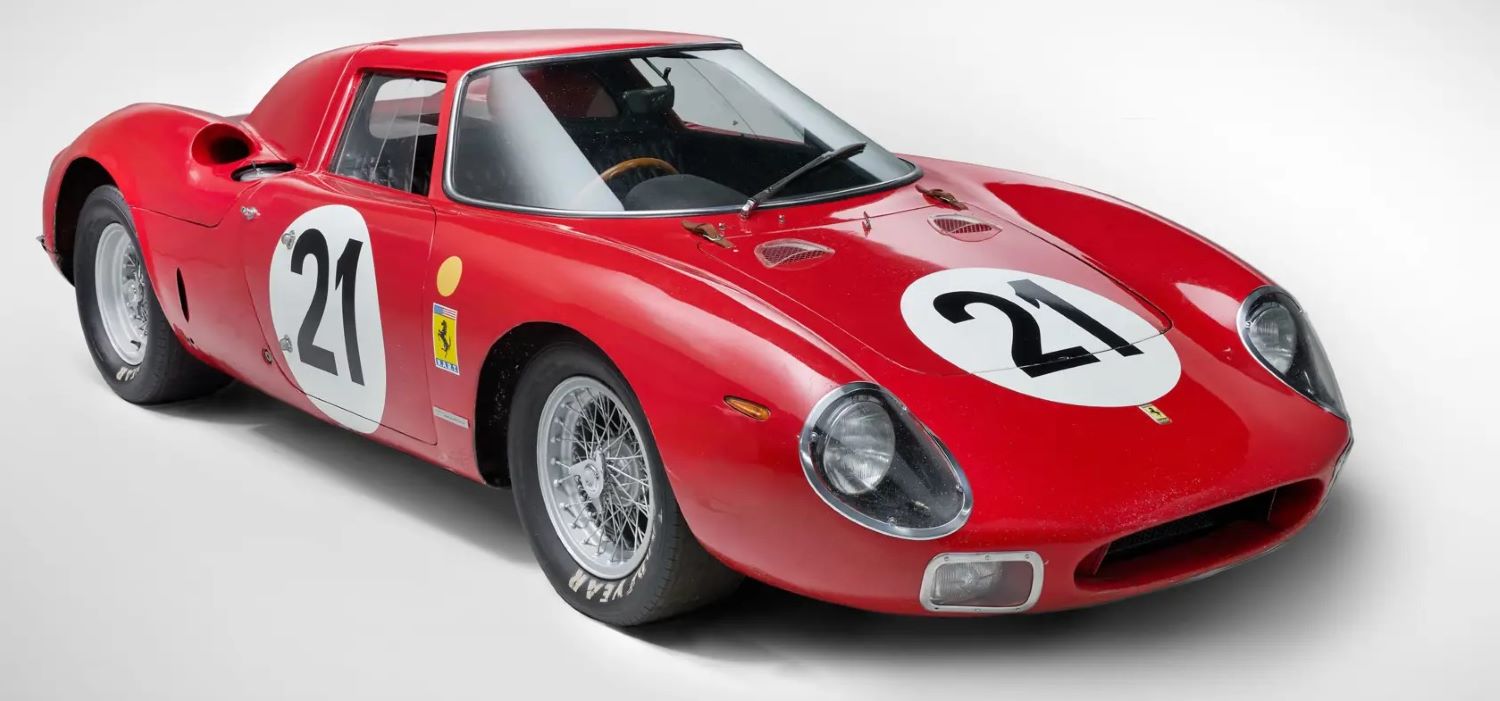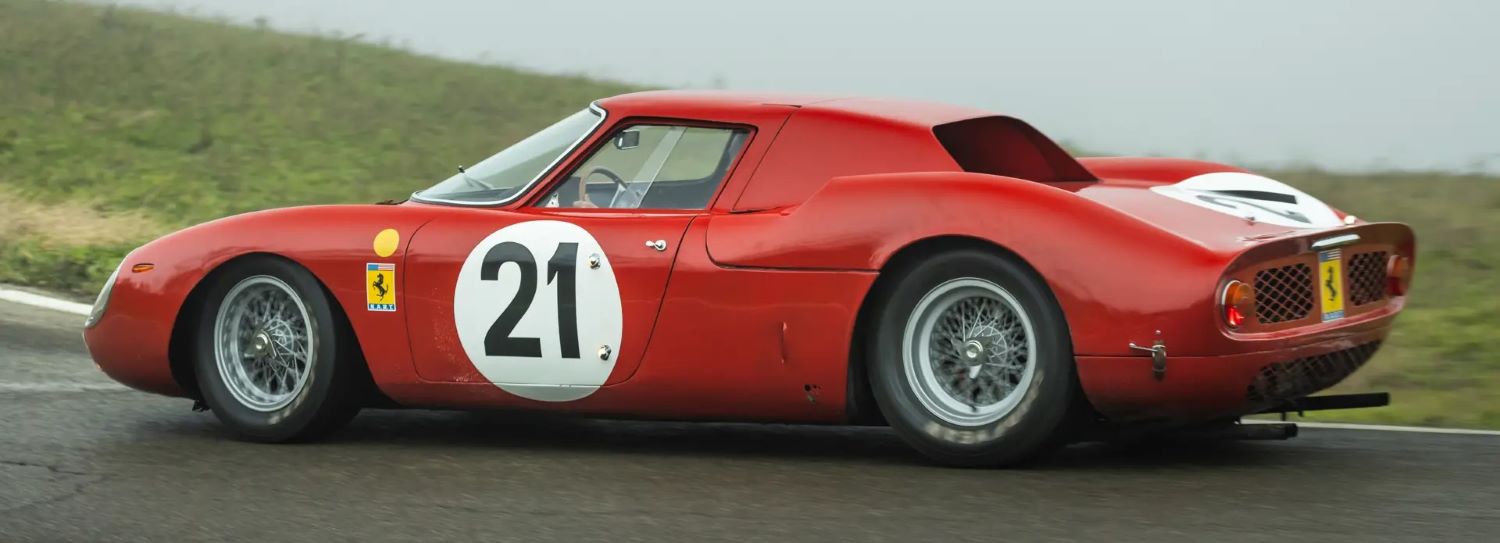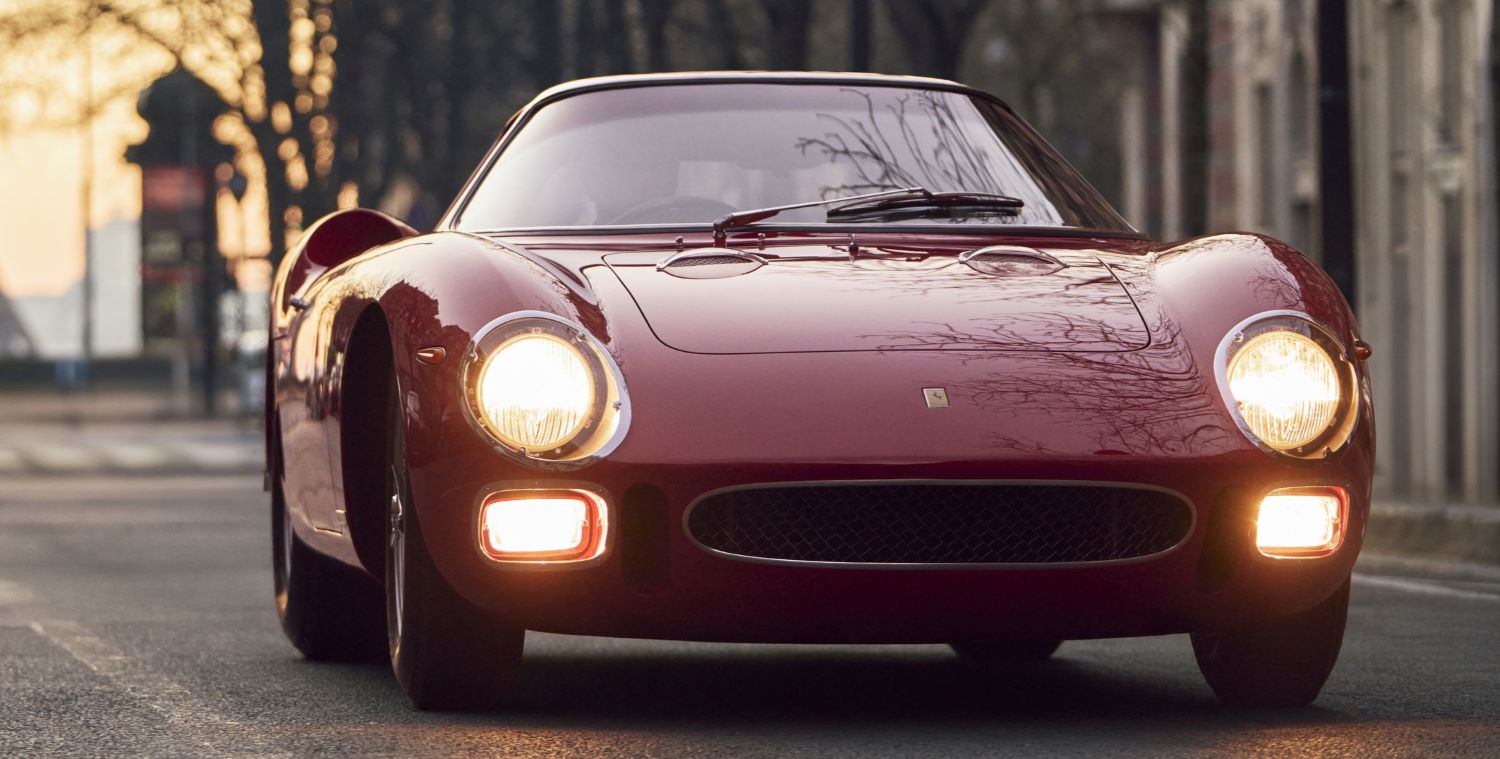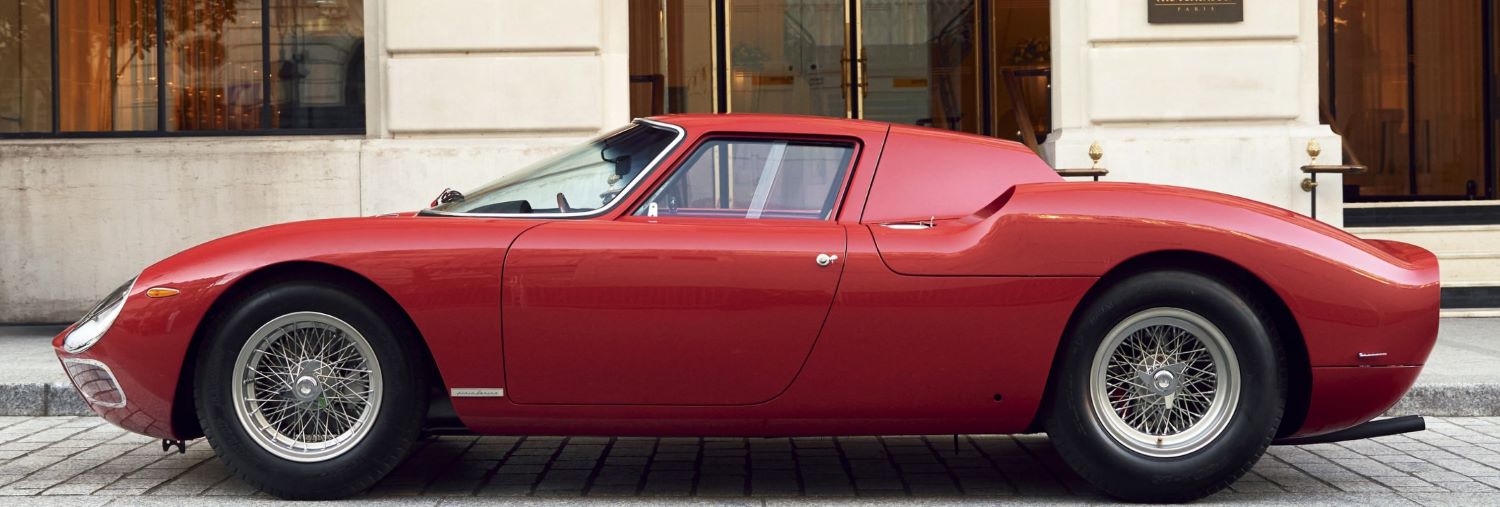
1964 Ferrari 250 LM
Ever since the 1960 Formula 1 season, when Ferrari adopted a mid/rear-engine design for its successful grand prix car, Maranello had been a steady proponent of this mid/rear engine placement. This evolution gained traction through the small-displacement Dino prototypes of the early 1960s before Ferrari fitted a Testa Rossa-specification V-12 into the back of a prototype chassis, resulting in the legendary 250 P that won the 1963 24 Hours of Le Mans.
By mid-1963, Ferrari was in search of a replacement for the 250 GTO in sports car competition, and Enzo Ferrari naturally concluded that the 250 P could be transformed into a formidable GT-class Berlinetta. A barely modified version of the 250 P chassis was mounted with new alloy coachwork by Scaglietti, featuring a low roof with flying-buttress rear pillars.
After formally introducing the 250 LM at the 1963 Paris Salon, Ferrari struggled to receive homologation approval from the FIA, particularly when the proposed 3.0-litre engine was upgraded to a 3.3-litre single-overhead cam dry-sump version of the V-12, internally classified as the type 211. Frustrated by the FIA’s refusal to cooperate, Enzo Ferrari quickly lost interest in the 250 LM and allotted the minimal production run to privateers rather than any factory usage. In doing so, the 250 LM became the first rear-engine Ferrari sold to private customers, commencing a trend that lasts to this day.
Just 32 examples of the 250 LM were built up to mid-1966, and it remains one of the most desirable Ferraris of all time, encapsulating advanced engineering, sensuous coachwork design, and a successful competition resume.




Originally unveiled in Paris in November 1963, the Ferrari 250 LM (for “Le Mans”) is a Grand Touring version of the mid-engined Ferrari 250 P. Featuring a body designed by Pininfarina and built by Scaglietti, it was intended to replace the 250 GTO, one of Ferrari’s most successful race cars. Although Ferrari was unable to obtain LM approval in the GT class, the model achieved significant success when a 250 LM won the 1965 Le Mans 24 Hours and the 1965 International Trophy for GT Prototypes. One of only 32 produced, this particular 250 LM enjoyed an accomplished racing career from 1965 to 1967, with notable victories at Brands Hatch, Snetterton, and Silverstone in 1966. The car later participated in two of motorsport’s most iconic endurance races – the 24 Hours of Daytona in 1966 and the 24 Hours of Le Mans in 1968.
The Ferrari 250 LM was produced from 1963 to 1966.


You must be logged in to post a comment.